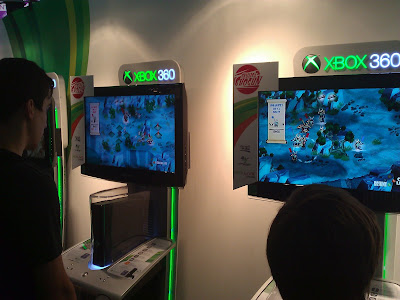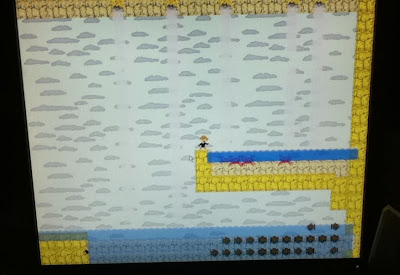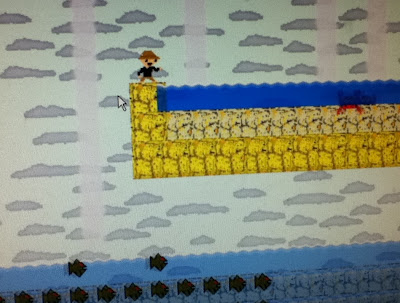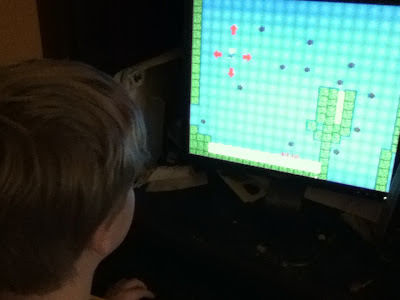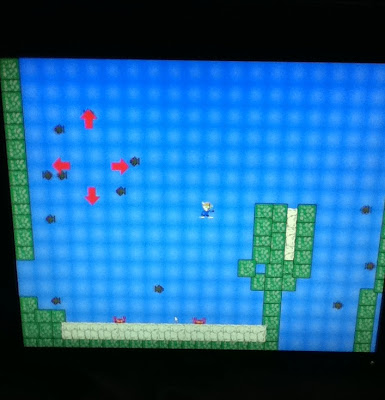
This is my other interview with Dax Gazaway. He is a Senior Game Designer at Row Sham Bow. He does "brainstorming techniques, concept pitching, design documentation, prototyping, and level design, with specialization in systems design." He has worked for other companies too. He was a designer for Star Wars Games.
I emailed him my questions and he emailed me back! Here is what he said:
Dax: Hi George! It's nice to get an email from you. I will do my best to answer all of your questions.
George: How old were you when you first started making games?
Dax: I was 5 when I started making board games, role playing games (made with pen and paper) and sports games. At he time, home computers could not be used to make games. I have been making one game or another since then. That's over 30 years of game making!
George: Did you use Gamemaker? If so, did you have to teach yourself?
Dax: That program was not around when I started making games, but I do use game maker a whole lot now. i think it is a great tool. Yes,I taught myself, but I already knew some basics of writing code.
George: When you first started programming did you pick it up right away or did you have trouble with it?
Dax: I found it to be very hard and i still do! Learning how to program in school makes things a lot easier, but making games is always hard. That is part of what people that make games like about it. If making games were easy, then everyone would do it and it would be boring. Part of the fun of making games is knowing that you are figuring out problems that no one else has ever solved!
George: What kinds of games are you working on?
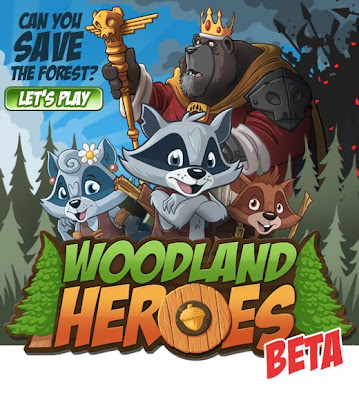
Dax: I am making Woodland Heroes for Facebook right now. In my spare time I like to make games with my kids and change the board games they play so they are more exciting. I also prototype games in game maker rather often.
George: It takes me about one week to make my games. How much time does it take for you to make one?
Dax: The shortest game I have worked on took six months. The longest took over THREE YEARS! Most of the games I have made took around two years and that's a very common time in the game industry.
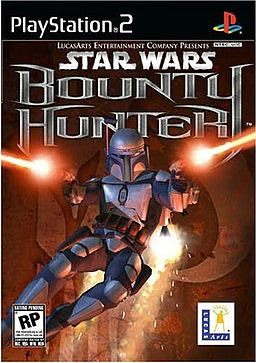
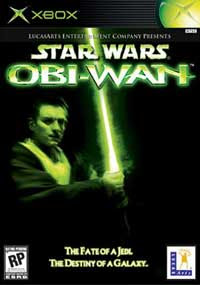 George: How did you get to work on Star Wars games?
George: How did you get to work on Star Wars games?
Dax: I had been working as a junior designer at another game company called 3DO. I applied at LucasArts and they gave me an interview. They liked me and i liked them so they offered me a job and I took it. I worked there for around two years and made four games with them, 3 of which were Star Wars games.
George: When I was researching you, I saw that there is a Star Wars character with your first and last name. Was he named after you? If he was, how did you get them to give you a Star Wars character?
Dax: Yes, he is named after me. They actually asked me if they could use my name. The producer of Pod Racer Revenge saw my name in an email welcoming to the company. He was looking for a name for the announcer character in the game and he liked mine, so he asked if the company could use it. I said yes, and I had to sign a contract that said they had permission, then they put my name in the game. I have always liked telling people about that :)
George: How do you come up with so many ideas for your games?
Dax: That's the easy part! Ideas for games come from everywhere. I often come up with 2 or 3 ideas i like EVERY WEEK! Now, if you do some math with that number, you will see that comes up to over 100 ideas a year. I work on teams that can be very large, up to 100 people. So again, do a little math and you can see that the team might come up with 10,000 ideas a year, but we only get to make one game every two years! That means the very hardest part is picking just the right idea and then making sure everyone on the team is happy with it.
George: How do you make characters look different when they run and jump?
Dax: I am a designer, so i don't do that part, but i do find it amazing how animators and artists are able to do all the things they do.
George: Do you know any other software I can make games on?
Dax: I recommend starting with board games and your own imagination. Make sports games with your friends, or make word games, or role playing games, or card games, or any other creative idea you have. There are a lot of skills in game making that you can learn without a computer and it's usually more fun to make games without a computer, because programming is a rather advanced skillet to learn for games. I do like game maker, but even that is very tough to learn and you will probably spend most of your time fixing broken games and less time making full games.
Dax: thanks for sending me your email. I am always excited to hear from young people that have the same passion for games that i do!
George: Just like Borut, Dax gave me a lot of important information. I am surprised that he uses GameMaker because that is what I use! I can't believe that he got his own Star Wars character! It's amazing!
Thank you Dax!



 George: How did you get to work on Star Wars games?
George: How did you get to work on Star Wars games? 

